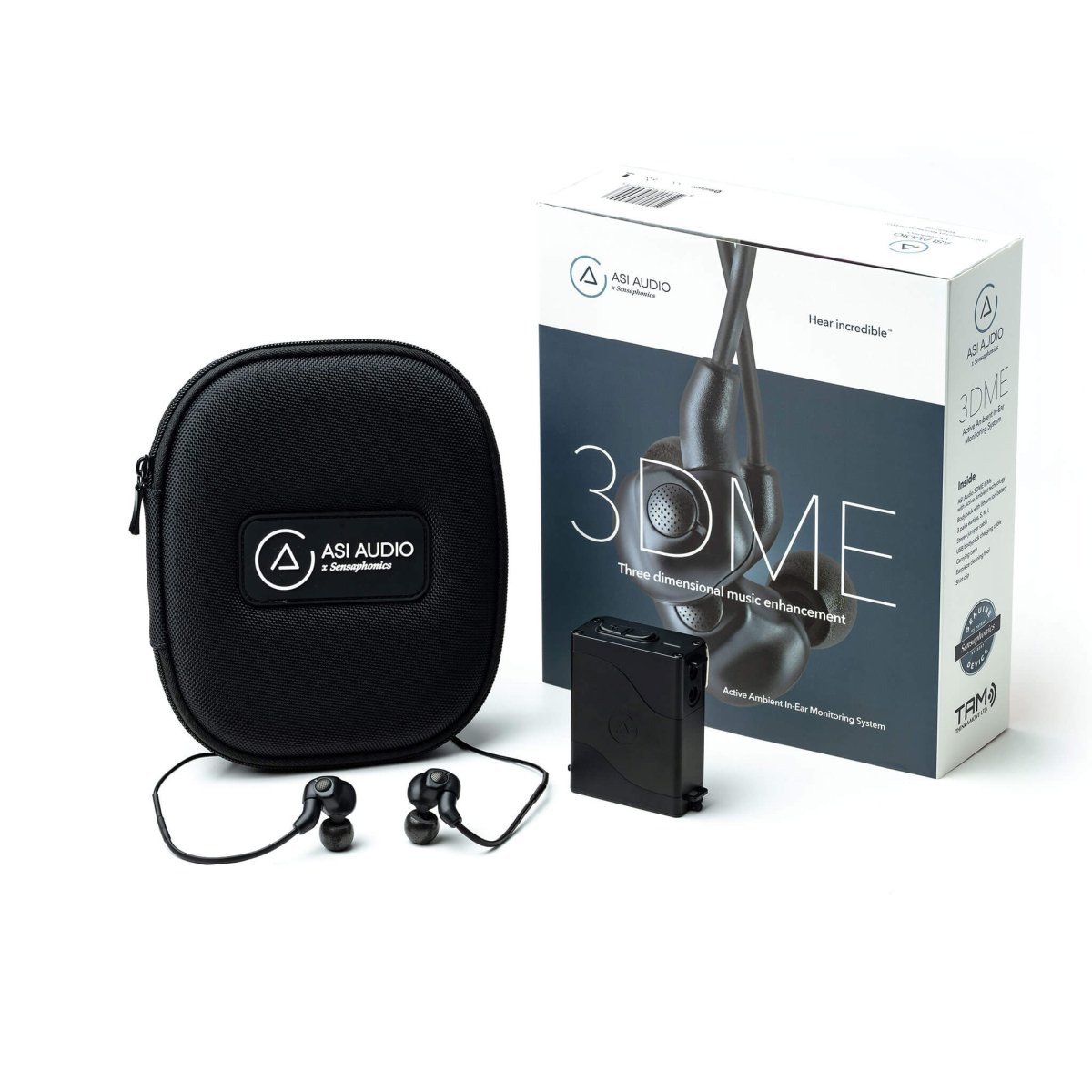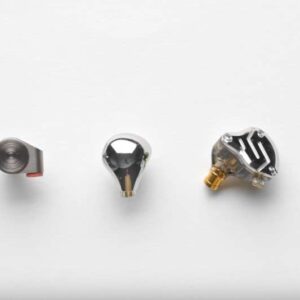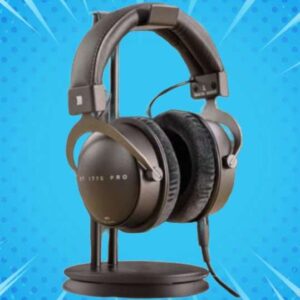In-Ear Monitors for Musicians provide a clear, personalized audio mix during live performances. These devices allow better control of what the artist hears on stage.
Navigating the soundscape of live music requires precision and clarity, something in-ear monitors expertly provide. Unlike traditional stage monitors, in-ear monitors are discrete, offering consistent sound regardless of movement or venue acoustics.
This not only protects musicians hearing by allowing lower overall volume levels but also improves performance quality with tailored monitoring mixes.
Musicians embrace in-ear monitors for their ability to isolate audio, reducing onstage noise and feedback. Investing in a good set of IEMs can be a game-changer for artists, with custom and universal fit options available to fit various preferences and budgets.
These personal auditory devices are indispensable tools that meet the demanding needs of performing professionals, ensuring every chord, beat, and note is delivered with exceptional fidelity.

Credit: drummersreview.com
The Role of In-ear Monitors in Live Music
The live music stage brims with energy and excitement. At its core, sound quality and artist performance shape the experience. Here, In-Ear Monitors (IEMs) play a vital role. They ensure musicians hear themselves and the band clearly amid the roar of the crowd.
Benefits for Performers
- Consistent sound levels regardless of venue size
- Freedom to move on stage with fewer cables to trip over
- Less vocal strain as artists hear their voices clearly
- Personal mix ability for individual band members
- Protection from hearing damage caused by loud monitors
Sound Clarity and Isolation
In-ear monitors offer unmatched sound clarity. Custom-fit IEMs provide excellent sound isolation, which blocks outside noise. This isolation allows musicians to focus on their mix and perform with precision.
| Feature | Benefit |
| Custom Molding | Optimal fit for each ear |
| Sound Isolation | Minimize external noise |
| High-Quality Drivers | Clear, high-fidelity audio |
Evolution of Stage Monitoring Systems
The way musicians hear themselves on stage has changed significantly. In the past, bulky speakers called wedges lined the front of performance areas. These provided a sound that often got lost in a sea of noise. Enter the era of in-ear monitors (IEMs).
They revolutionized how artists experience sound. Let’s journey through this transformation.
From Wedges to In-ear
Wedges, large speakers at musicians’ feet, were once the norm. They blasted back a mix of vocals and instruments. This setup posed several challenges:
- Limited mobility for artists
- Sound bleed, leading to poor audio quality
- Increased risk of hearing damage
With in-ear monitors, musicians enjoy a personalized mix. IEMs fit snugly within the ear canal. They offer clarity and precision previously unheard of with wedges. Benefits include:
- Clear sound directly into musicians’ ears
- Less onstage noise
- Freedom to move without losing audio quality
Technological Advances in Personal Monitoring
Advancements in technology have played a pivotal role. Earpieces have shrunk in size but grown in capability. Here’s a look at these progressions:
| Advancement | Impact |
| Wireless Systems | Enable movement without cables |
| Digital Mixing | Allows personalized soundscapes |
| Sound Isolation | Reduces external noise influence |
Custom molded IEMs provide comfort and noise cancellation. Musicians experience pure sound tailored to their needs. Stage monitoring has indeed come a long way from the bulky wedges of yesteryears. It ensures artists perform at their best with minimal strain.
Selecting The Right In-Ear Monitors
For musicians, finding the perfect in-ear monitor (IEM) can change the game on stage. Sound clarity, comfort, and durability come into play. This guide dives into choosing the best IEMs for peak performance.
Custom Molded Vs. Universal Fit
The battle between custom-molded and universal-fit IEMs is fierce. Each has its pros and cons.
- Custom Molded: Tailored to your ears, offering unparalleled comfort and noise isolation.
- Universal Fit: Readily available and more affordable, with various ear tips to improve fit.
Driver Configuration and Sound Quality
Driver configuration greatly affects sound quality. More drivers can mean better sound.
| Driver Type | Sound Quality |
| Single Driver | Good for casual listeners. |
| Dual Driver | Richer sound with more depth. |
| Triple Driver | Even more clarity and range. |
| Quad Driver and above | Top-tier for professionals. |
Wired vs. Wireless
In-ear monitors are also available in both wired and wireless configurations. Wired IEMs typically offer lower latency and higher fidelity audio transmission, making them ideal for critical listening applications.
Wireless IEMs, on the other hand, provide greater freedom of movement on stage but may suffer from increased latency and potential interference.
Getting the Best Fit: Tips and Tricks
Every musician knows that a great performance hinges on how well you hear yourself. In-ear monitors (IEMs) provide a clear, personal sound mix on stage. But the secret to maximizing their potential lies in the fit.
A good fit means better sound insulation, heightened comfort, and a smoother experience. Let’s explore how to get that perfect fit for your IEMs.
Assessing Comfort and Seal
Comfort comes first with IEMs. A poor fit can lead to distractions or even pain during a long set. Finding the right tips for your ears is crucial. Experiment with different sizes and materials. Silicone tips provide a snug fit while foam expands to your ear shape.
Check for a proper seal by listening for a drop in ambient noise. A good seal means you’ve blocked outside sounds, which equals better audio clarity.
Maintaining Your IEMs for Performance Longevity
Proper maintenance of your IEMs is key to their longevity. After each use, wipe them down to prevent the build-up of earwax or debris. Store them in a protective case to avoid damage from drops or squashing.
- Clean the nozzles with a soft tool regularly.
- Replace tips when they lose their shape or firmness.
- Check the cables for wear and tear and replace them if necessary.
By keeping your IEMs clean and intact, you ensure consistent performance every time you step on stage.
Integrating In-ear Monitors with Performance Gear
Integrating In-Ear Monitors with Performance Gear is vital for musicians. It ensures clear sound and comfortable stage movement. A well-integrated system connects performers with their music seamlessly.
Let’s explore how to blend in-ear monitors (IEMs) with your performance gear.

Credit: 3dwaveaudio.co.uk
Wireless Systems Compatibility
Choosing the right wireless system for your IEMs is crucial. Make sure it matches your monitor’s frequency. Here are key points to consider:
- Frequency Range: Ensure it supports your IEM’s operating frequency.
- Transmission Clarity: Look for systems with low interference.
- Battery Life: Long-lasting batteries are essential for seamless performance.
- Portability: Compact systems are easier to handle on tour.
Remember, a compatible system enhances audio quality and prevents dropouts.
On-stage Setup and Signal Flow
Setting up your IEMs on stage is simple. Follow these steps for a smooth signal flow:
- Connect: Link your instrument/mic to the mixing board.
- Route: Send the main mix to a personal monitor mixer.
- Adjust: Create your mix balance.
- Transmit: Wirelessly send the mix to your IEMs.
- Perform: Play with confidence, hearing every detail.
Understanding this flow ensures a quick setup and a stress-free performance.
Protecting Your Hearing
Hearing is a musician’s greatest asset. Over time, loud sounds can harm this precious sense. In-ear monitors (IEMs) are not just for clear sound on stage. They help keep your ears safe. Let’s explore how using IEMs can be a sound choice for your hearing health.
Effective Volume Management
Control is crucial for hearing protection. IEMs give you that control. With IEMs, you can manage the volume of what you hear separately from what the audience hears. Unlike traditional stage monitors, IEMs deliver sound directly into your ear.
This means you can listen at a lower, safer volume.
- Direct Sound: IEMs send audio straight into your ear.
- Less Noise: They block out external noise, reducing the need for higher volumes.
- Custom Volume: Adjust your mix without changing the main output.
Long-term Benefits of Using IEMs
Think of IEMs as an investment in your future self. Continuous exposure to high sound levels can lead to hearing loss. IEMs can help prevent this. You’ll be able to perform for years without sacrificing the health of your ears.
| Benefit | Description |
| Hearing Preservation | Reduced sound levels mean less hearing damage. |
| Sound Quality | Crisp and clear audio allow for precision performances. |
| Comfort | Custom-fit IEMs can be worn for long periods without discomfort. |
Consistent use of IEMs can mean the difference between a short career and a long, successful tenure on stage. Choose to protect your hearing now and enjoy the music for decades to come.
Best Practices for IEM Use During Live Shows
Using In-Ear Monitors (IEMs) during live shows can change the game for musicians. These devices let performers hear the mix they need to deliver a stellar performance. Follow these best practices for an amazing live sound experience.
Mixing Techniques for Optimal Sound
Crafting the perfect IEM mix is crucial. This ensures that artists stay in tune and timing. Check out these mixing tips:
- Start with a clean slate. Create a mix from scratch for clarity.
- Personalize the mix. Cater to what each musician needs to hear.
- Use panning. Spread out the instruments to mimic the stage setup.
- Include ambient mics. They help maintain a connection with the audience.
Avoiding Common In-ear Monitor Issues
To keep your live show smooth, watch out for these common IEM problems:
| Issue | Solution |
| Feedback | Check connections and reduce mic volume. |
| Discomfort | Ensure proper fit or consider custom molds. |
| Signal dropouts | Investigate frequency clashes and distance from the transmitter. |
| Battery failure | Always have spare batteries on hand. |
Remember to regularly test your IEMs before hitting the stage.
Personalizing the In-ear Monitoring Experience
Personalizing the In-Ear Monitoring Experience transforms how musicians interact with their sound on stage. Unlike traditional stage monitors, in-ear monitors (IEMs) offer a tailored listening experience.
This customization enhances performance and comfort, turning a good show into a great one. Plug in, play on, and let’s dive into how to build a personal audio nirvana.
Building the Perfect Monitor Mix
Crafting your ideal monitor mix is a game-changer. Start by considering each element’s volume levels. Keep a clear focus on personal cues without losing the ensemble’s context.
Experiment with panning to place sound sources in a soundstage around your head. This mimicry of natural hearing reduces fatigue.
- Balance your instruments to stay in harmony with the band.
- Adjust your vocals for clarity over loud instruments.
- Add ambient mics if you crave live audience interaction.
In-ear Monitors for Band Synchronization
A tight band performance relies on precise timing. In-ear monitors are critical to this goal. Musicians can listen to a synchronized mix or a click track to keep everyone on tempo. IEMs trigger flawless entries and exits during complex performances.
| Feature | Benefit |
| Click Tracks | Maintains steady tempo |
| Cue Mix | Guides precise music entries |
| Sound Isolation | Reduces stage noise interference |
Choosing the Perfect Pair: Factors to Consider
Sound Quality
Perhaps the most critical factor to consider when choosing in-ear monitors is sound quality. Look for models that offer a balanced frequency response, clear transient response, and minimal distortion across the entire audible spectrum.
It’s also essential to consider the number and type of drivers used in the IEMs, as this can significantly impact their sonic performance.
Comfort and Fit
Comfort and fit are also paramount when selecting in-ear monitors. A secure, comfortable fit not only ensures a pleasant listening experience but also helps to maintain consistent sound isolation.
Pay attention to the variety of ear tips included with the IEMs and experiment with different sizes and materials to find the perfect fit for your ears.
Durability and Build Quality
Durability and build quality are crucial considerations, especially for musicians who perform regularly in demanding environments. Look for in-ear monitors constructed from high-quality materials such as reinforced plastics, aluminum, or titanium.
Additionally, consider models with detachable cables, which are easier to replace if damaged.
Considerations for Musicians
Budget
In-ear monitoring systems range in price from affordable entry-level models to high-end professional setups. Consider your budget constraints and performance requirements when selecting the right IEM solution for your needs.
Compatibility
Ensure compatibility with your existing audio equipment, including wireless transmitters, mixing consoles, and personal monitoring systems. Look for IEMs with universal connectors or adapters to facilitate seamless integration into your setup.
Customization Options
Take advantage of customization options such as interchangeable ear tips, cable lengths, and sound signatures to tailor your in-ear monitoring experience to suit your preferences and playing style.
The Future of In-ear Monitoring
As we peer into the horizon of music technology, the future of In-Ear Monitoring (IEM) gleams with promise. This tailor-made audio revelation continues to evolve, aiming to hit every note in harmonious perfection for musicians on stage and in the studio.
Emerging Technologies and Trends
The landscape of In-Ear Monitors is undergoing a rapid transformation.
- Wireless advancements: Cutting-edge wireless tech offers freedom on stage like never before.
- 3D Printed custom fits: Tailor-made IEMs ensure a perfect ear match for each artist.
- Smartphone integration: Remote adjustments to your IEM mix through an app are becoming standard.
Emerging tech in IEMs also focuses on active noise cancellation and ambient sound features. These features help artists immerse themselves in their performance, blocking out distractions.
The Expanding World of Personal Monitoring Solutions
Personal monitoring solutions are no longer a luxury but a necessity. This expansion isn’t just about technology, but also about accessibility and customization.
- In-ear monitors are now within reach of budding musicians and seasoned pros alike.
- Customizable sound profiles cater to the unique hearing preferences and needs of each user.
- Advanced systems provide complete control over individual mix, volume, and EQ settings.
Developments in personal monitoring are guiding musicians toward a future where sounds are not just heard but truly experienced. The introduction of AI-driven monitoring solutions is set to elevate the live performance experience to unprecedented heights.
Frequently Asked Questions about In-ear Monitors for Musicians
What Do Professional Musicians Use for In-ear Monitors?
Professional musicians often use custom-molded in-ear monitors (IEMs) for precise sound quality and noise isolation during performances. Brands like Shure, Westone, and Ultimate Ears are popular choices.
Why Do Musicians Wear In-ear Monitors?
Musicians wear in-ear monitors to hear a custom mix of vocals and instruments. This ensures they stay on time and in tune, reducing stage noise and protecting their hearing.
Are In-ear Monitors Good For Listening To Music?
Yes, in-ear monitors are excellent for music as they provide high-quality sound isolation and detailed audio reproduction. They’re perfect for immersive listening experiences.
What In-ear Headphones Do Musicians Use?
Musicians often use Shure SE846, Sennheiser IE 800, and Westone UM Pro 50 in-ear headphones for their clarity and sound isolation.
Conclusion
Ear monitors provide musicians with the clarity and control they need during performances. They ensure an optimal audio experience, blending technical prowess with practical usability. Whether you’re on a crowded stage or in a studio, selecting the right in-ear monitor can elevate your musical journey.
Embrace the sonic upgrade, and let your talent shine through every note.

A passionate tech blogger and the founder of Best Tech View, a dynamic platform dedicated to all things technology. With a keen interest in the tech, Ahmad strives to provide insightful and engaging content on the latest tech trends, and breakthroughs.



